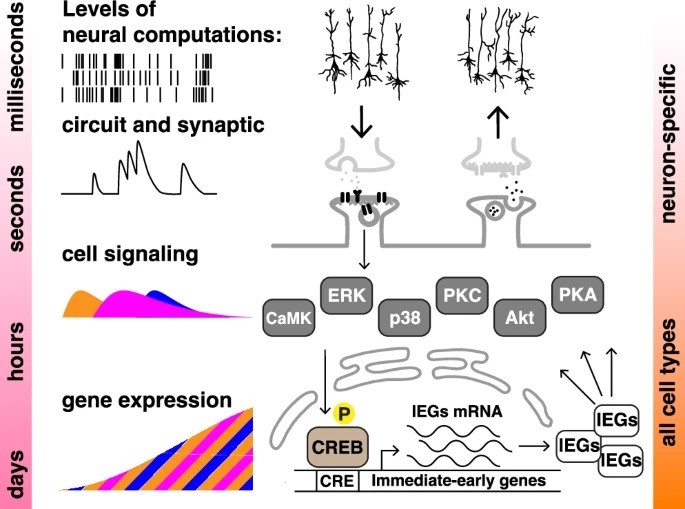Neuronal memory formation
The massed-spaced learning effect in non-neural human cells
Abstract
The massed-spaced effect is a hallmark feature of memory formation. We now demonstrate this effect in two separate non-neural, immortalized cell lines stably expressing a short-lived luciferase reporter controlled by a CREB-dependent promoter. We emulate training using repeated pulses of forskolin and/or phorbol ester, and, as a proxy for memory, measure luciferase expression at various points after training. Four spaced pulses of either agonist elicit stronger and more sustained luciferase expression than a single “massed” pulse. Spaced pulses also result in stronger and more sustained activation of molecular factors critical for memory formation, ERK and CREB, and inhibition of ERK or CREB blocks the massed-spaced effect. Our findings show that canonical features of memory do not necessarily depend on neural circuitry, but can be embedded in the dynamics of signaling cascades conserved across different cell types.

In our previous studies in Aplysia, we observed that two events spaced 45 min had the same effect on long-term memory as four events spaced 15 min— in other words, only two events, and their temporal spacing, were critical for the induction of sensitization memory in that system.
Overall, both phosphorylation and nuclear translocation of ERK differentially respond to massed and spaced treatments with TPA, indicating that the temporal pattern of stimulation is decoded at least in part either by ERK itself, or upstream of this kinase.
Similarly to the P-ERK/total ERK ratio, the ratio of P-CREB to total CREB 24 h after training was also significantly different between training paradigms and highest in 4×TPA-treated cells (Fig. S4B). The P-CREB/total CREB ratio was only slightly elevated above baseline after the 4×TPA treatment, and instead it was reduced below baseline in cells that had received suboptimal training (1×TPA and massed TPA). At the same time, we observed a modest increase in total CREB protein in 4×TPA-treated cells but not in 1×TPA or massed-treated cells. When the two effects (on P-CREB/total CREB ratio and on total CREB protein) were multiplied (accounting, therefore, for absolute levels of S133 P-CREB 24 h after training), the product, in 4×TPA-treated cells, was robustly above baseline and significantly greater than in other paradigms (Fig. S4B). These results suggest that CREB-dependent transcription is regulated not only via CREB phosphorylation, but also by controlling the levels of total CREB protein, and both effects are preferentially induced by spaced training, whereas suboptimal training paradigms in fact reduce the transcriptional capacity of the cell by downregulating P-CREB. Future studies will determine whether this experience-dependent modulation of P-CREB and total CREB plays a role in boosting and blunting the effects of subsequent training.
source: https://www.nature.com/articles/s41467-024-53922-x
#5ht #serotorin #neurotransmitter #memory #neurons #patterns #formation #aplysia #cAMP #creb #gene-expression